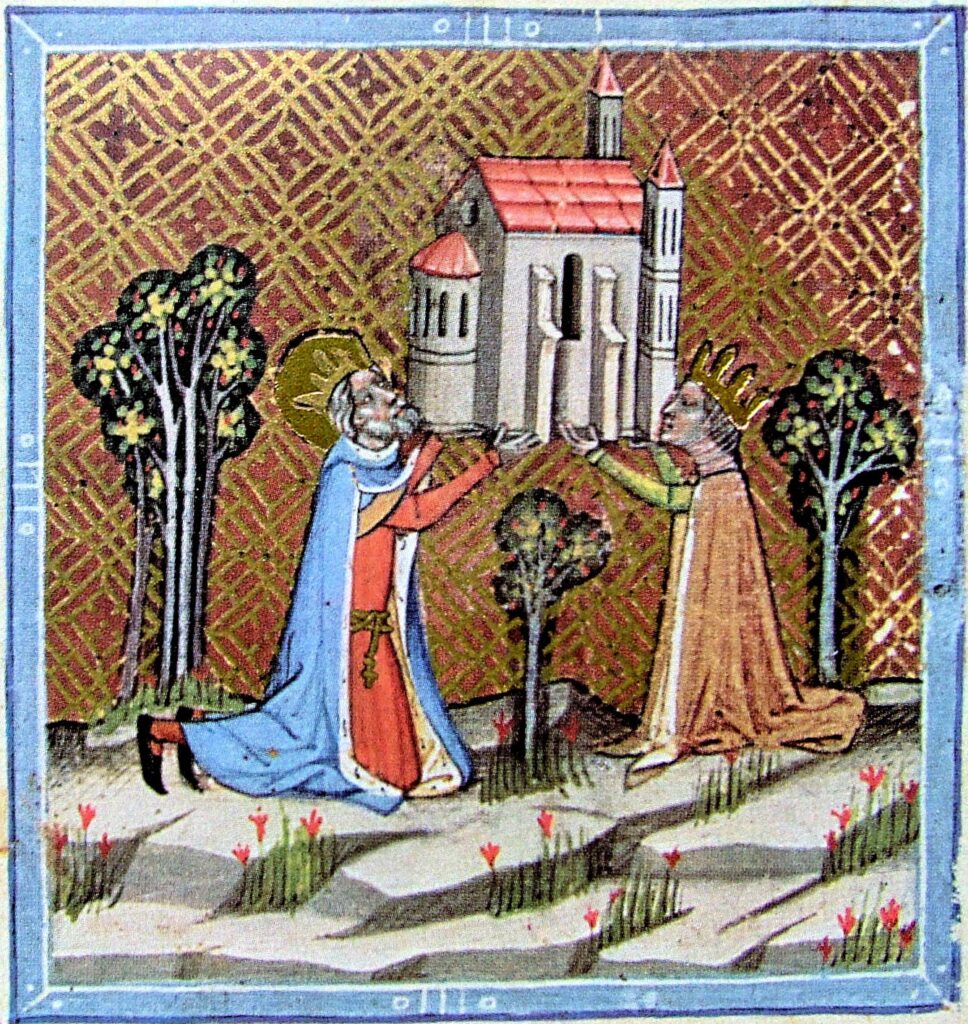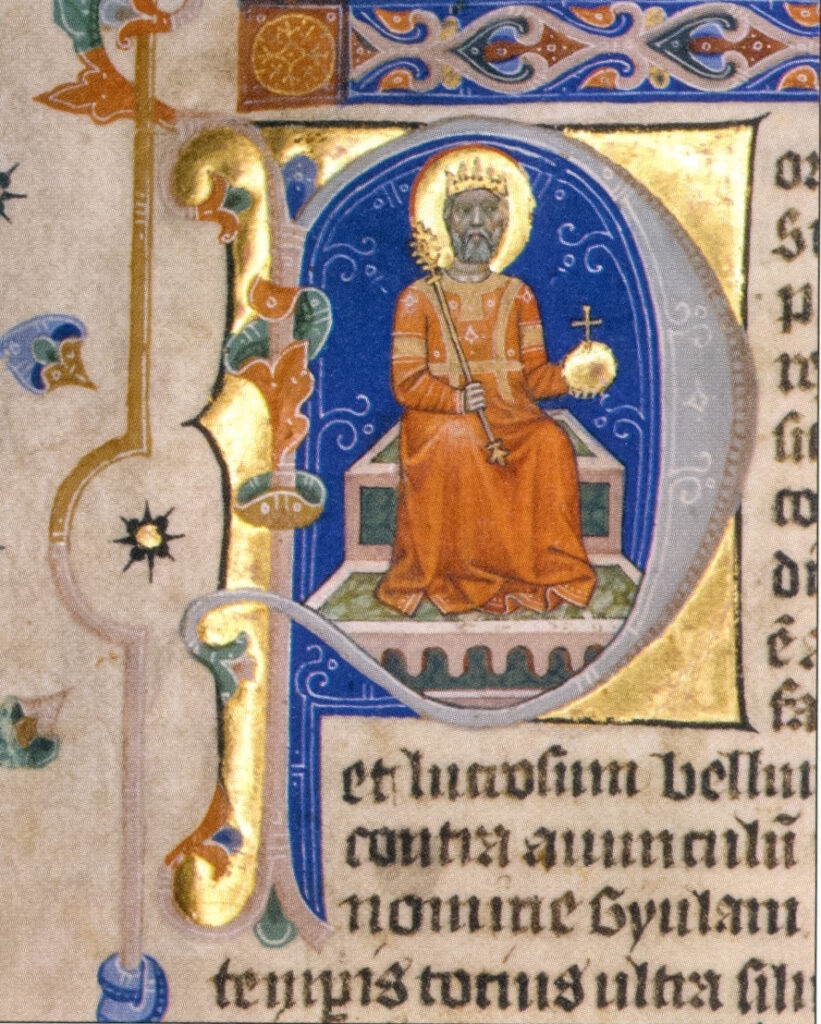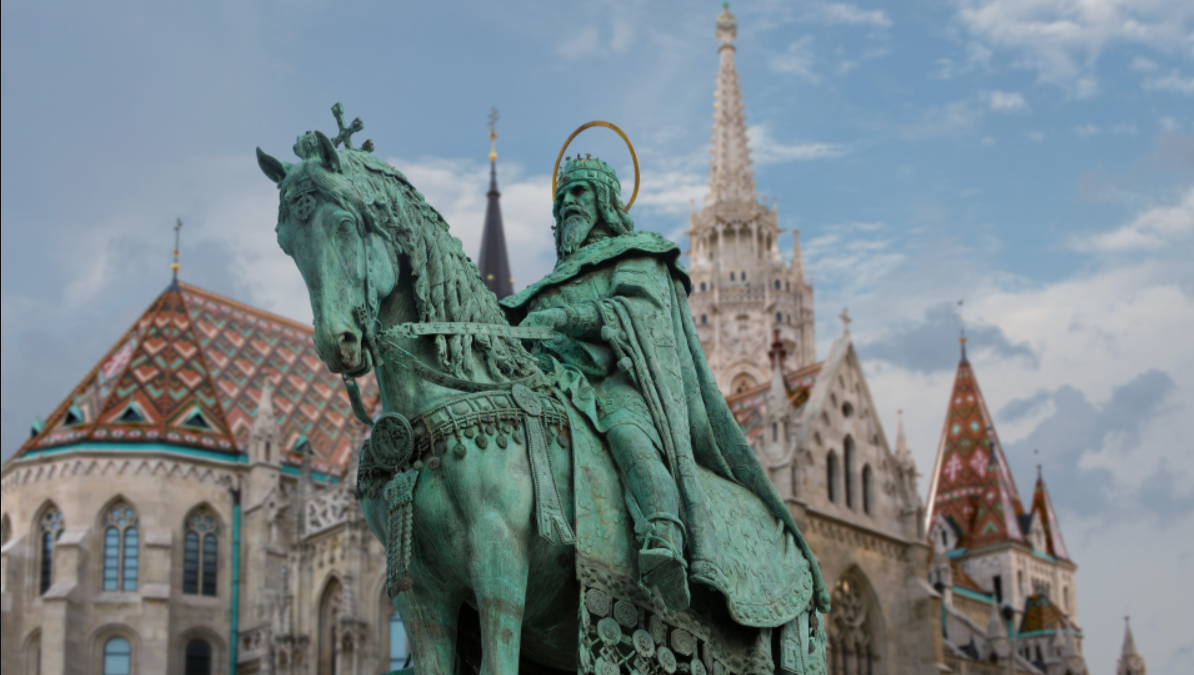King Stephen I (r. 997/1000–1038) was one of the longest reigning and undoubtedly one of the most successful kings of our time, yet his personality is hardly mentioned in the sources. Apart from Stephen’s laws, a few later interpolated documents, and a mirror for princes titled Intelmek (Admonitions), we have only a very scanty overview of sources, which only reveal small mosaics of the King’s life. In the years around the King’s canonization, his reign was still remembered, as by medieval standards not much time had passed since it, yet
his legends presented an ideologized image of Stephen, imbued with the political expectations of the time, which still defines our knowledge of him.
Thus, tradition, rather than historical sources, became the source of respect for Stephen in Hungary.
The ex-post legitimization of power and the acceptance of its legal basis are the eternal problems of political systems. The political justification of the power of our first king Stephen was ensured by the identity of the country and church and the ruthless organization of both. For the person of Stephen himself to take on mythical proportions, for him to become a symbol of the rule of the country, the bloody decades of the 11th century had to pass. After the pagan rebellion, King Andrew I (r. 1046–1060) became the first Hungarian king to seek the imperial insignia of Saint Stephen and to trace his power specifically to Stephen and his blood relationship with him.
Ever since King Andrew I of Hungary, the prevailing powers have measured themselves against the idealized greatness of Stephen and have considered their own reign to be the most worthy of the age of the Holy King. Thus, throughout history, each era has had its own image of Stephen, which has been enriched by several different ideas over time. It could represent the modernizing religious state, the country of the Counter-Reformation, the retrograde religious state, the integrity of historic Hungary, or even the clerical reaction. The possibility of many different interpretations makes it difficult to account for the whole of Stephen’s legacy to this day but at the same time, it clearly indicates the presence of the whole of Hungarian history and common destiny in the image of Stephen.
The figure of Stephen, the tradition of Saint Stephen, has undergone three great metamorphoses up to the threshold of the modern age. The first was the canonization of St Stephen in 1083, initiated by King Ladislaus to symbolize the end of a period of civil war. St Ladislaus I (r. 1077–1095), assuming the mantle of the first king, came forth as King of all Hungarians. The canonization of Stephen led to the creation of a mythical image of the King, both ecclesiastically and politically, which was detached from reality. All the disturbing historical dates and moments that would have cast doubt on the fact that the Hungarian state and church were founded by Stephen of his own volition, in a single act, until the end of time, were erased from the sources.

From the time of Kings Ladislaus and Coloman (r. 1095–1116) onwards, the source of the rights of Hungarian kings was the person and reign of Stephen, and the objects associated with him were therefore of special significance. Stephen possessed almost all the qualities of the mythical medieval founders of the state: he legislated, minted money, established peace, introduced literacy, and founded towns and churches. Many of the courtly representations and ceremonies are linked to Székesfehérvár, which the King made the sacral centre of the country on the model of Aachen: from King Coloman onwards, a good number of Hungarian kings were buried there, they were crowned there, the royal throne was erected there, the royal archives and treasury were kept there, and the crown of Saint Stephen, that is, the use of the Holy Crown and the act of crowning was also conditional on its being performed there. The justice days, which can be considered the predecessors of the later diets and served as court and government sessions, were also held in Székesfehérvár around 15 and 20 August, the memorial days of Stephen’s death and canonization.
For centuries, there was no questioning of the integrity of the legends of Saint Stephen or the authenticity of the Holy Crown. These were not even historical claims, but decisive manifestations of the collective memory and cohesive power of the Hungarian nation, which was made even more effective by the idea of the Holy Crown from the side of public law from the 15th and 16th centuries. Historical research and memory are still divided to this day: in historical memory, the person of Stephen and the Holy Crown represent the country beyond its borders and the continuity of the exercise of power within the country, that is, the legal basis for the publication of Admonitions and the legal codes of Stephen, intended for Stephen’s son, Prince Emeric (d. 1031), in the 16th century.

The second major turning point came in the first half of the 17th century. The revival of the cult of Stephen was to become more overtly political and became a key element of Hungarian religious representation, which increasingly emphasized the concept of Hungary offered by King Stephen to the defence of the Virgin Mary. Until the second half of the 18th century, the idea of the ‘Regnum Marianum’ was one of the strongest references not for pro-Habsburg but for independent and sometimes even anti-Habsburg politics. Hungarian Jesuit monk Péter Pázmány transformed the veneration of Stephen in yet another respect, when he linked it to the question of national autonomy, thus opening the way to an integrating revival of the tradition of Stephen that was acceptable to the nation as a whole, not just to Catholics.
In the framework of the third great turning point, the cult of Stephen became part of the representation of state power with the reign of Hungarian Queen Maria Theresa (r. 1740–1780), who again sought greater autonomy from Rome in matters of church policy. The Queen brought home his relics, founded the Order of Saint Stephen, and made Stephen’s Day a national holiday. At the birth of modern Hungary in 1848–49, the Holy Crown was a symbol of kingship and was removed from the Hungarian coat of arms as a matter of course, but the question of the form of government has since been transcended.
Today, the Holy Crown and Stephen himself represent the totality of Hungarian history, the country, and the Hungarians living both within and beyond its present borders.
After 1947, the Communist authorities tried to erase the memory of all this by having people celebrate the constitution on 20 August. But to no avail: after 1989 the nation reclaimed the tradition of St Stephen, most visibly demonstrated by the reintroduction of the procession of the Holy Right (1989), the new Hungarian coat of arms with the Holy Crown on it (1990), the proclamation of a special state holiday (1991), the transfer of the Holy Crown to the Parliament (2001), and the establishment of the Order of Saint Stephen (2013).
The foundation of the Hungarian State created unprecedented stability in the Carpathian Basin, setting the region on the path of Western-style modernization and development. Before the Hungarians, no other power had managed to conquer the whole basin permanently, although it is true that ethnically speaking, the Hungarians had not managed to occupy the whole area either. In the Middle Ages, however, the solid Hungarian frontiers were almost unparalleled in Europe. The country transmitted a series of economic, cultural, and civilizational movements and influences into the region, many of which spread eastwards as far as its borders. The founding of the Hungarian state also had a decisive influence on the history of Croatia, Slovakia, and Romania in particular, since their present territories lay to a greater or lesser extent, or entirely, within the territory of the Kingdom of Hungary, and so Stephen, despite all his intentions, can be seen as having shaped their history as well.
The new states formed around the year 1000 became unconditionally part of Christian Europe, the ‘Europa occidens’. The medieval perspective distinguished only the territories under the rule of Byzantine Orthodox Christianity; the terms ‘Central Europe’ and ‘Eastern and Central Europe’ of modern political terminology were unknown to it. In the first centuries, the dynasties of the new states established close links by marriage, both among themselves and with the ‘Western’ dynasties, and their countries were organically integrated into the Latin Church and the community of rulers. At the same time, modern historians rightly point out that the similarity of the socio-statistical indicators of the territorial strip formed by the new states from the Adriatic to the North Sea, despite their differences, characterizes a group of countries that have developed independently up to the present day. Although socio-economic development brought this region very close to the more developed Western areas by the 14th century, and again by the end of the 19th century, by overcoming the disadvantages that existed at the beginning and were still evident in the 11th and 12th centuries, complete and final integration was prevented by adverse phenomena on the periphery. In the course of the 11th century, not simply new states but a new region, East-Central Europe, was born, which has just today been given another historic chance to catch up with the more developed world, and Hungary to reform its former regional integrating role.
On 14 August this year a series of cultural events entitled 1100 Years in Europe, 20 Years in the Union was launched in Székesfehérvár, the historic capital of Hungary, as a side event of the Székesfehérvár Royal Days. The choice of the venue to commemorate King Stephen suggests that
strong nations and strong national cultures are the foundations of a strong Europe.
Now that Hungary holds the presidency of the European Union, it is not without reason that we remind that we arrived in Europe already 1100 years ago.
Related articles:







